The camping industry is no stranger to refrigeration; in fact, the earliest known refrigerators were cooled with ammonia in the 1850s and worked their way into caravans by the 1920s.
The lack of moving parts made them incredibly tough and allowed them to last a long time. Fast forward to modern times and there are still ammonia fridges in service today.
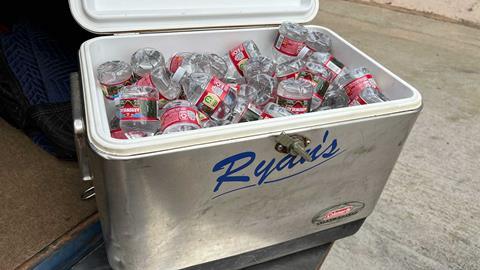
The Classic Ice Cooler
The ice cooler is just a mobile version of the classic icebox. Made popular in the 1920s, professional ice cutters would harvest ice from frozen lakes in the winter and drag it to the icehouse, where they would saw it into blocks and sell it. The basic premise of an insulated box to prolong the life of the ice goes mostly unchanged today.
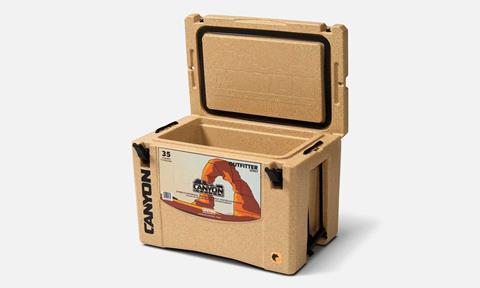
The Modern Ice Cooler
Ice cooler building materials, however, have changed radically in the last 10 years. Thanks to modern technology and manufacturing techniques ice coolers are super efficient and can keep food and drinks well-insulated for long periods of time. Rotomolded plastic containers filled with expanding foam claim to keep ice frozen for 10 days in 100-degree heat.
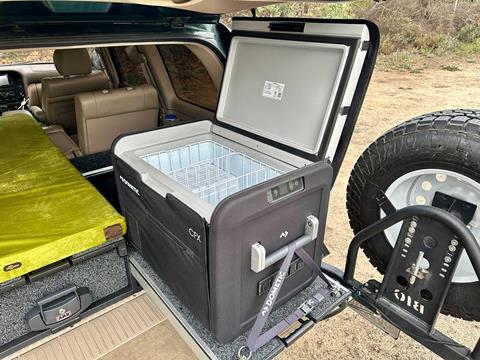
12V Compressor Fridges
These seem to be all the rage lately, yet this idea isn’t new at all. Australia is no stranger to heat, so keeping food safe to eat becomes a real problem. The earliest known 12-volt portable refrigerators seem to come from Engel in 1962.
Since then, modern 12V fridges boast features like variable compressors, dual-chamber cooling, battery safety modes, and Bluetooth operation.
Smittybilt’s even has an onboard battery built-in, buying you six hours of cooling on a hot day with it sitting at camp unplugged.
12V Fridge Positives
Let’s dig into the positives of 12V fridges. The first thing everyone notices about a fridge is the space. Since there is no ice as in an ice cooler, the food and drink capacity practically doubles. The next thing you notice is dry storage.
Gone are the days of the wet ham sandwich where cold water sneaks through the seal of your sandwich bag. Not to mention modern conveniences like dual-zone cooling. Ice cream on one side and cold cuts on the other. Last, being able to monitor or adjust temps in real time from your phone are clutch features you didn’t know you needed.

12V Fridge Negatives
Once you get over the sheer awesomeness of refrigeration off-road, you will start to notice a couple of things that are annoying about the fridge. The first mistake is leaving your fridge plugged in to your vehicle’s starter battery for more than 20 hours when it’s hot out. You will need jumper cables or a booster box as a fridge owner.
The next thing you will notice is it takes heat to make cold. The interior of your rig will see rising temperatures and at some point reach a threshold where the fridge is fighting the vehicle’s interior heat to stay alive. That said, that heat can be a welcome friend on a cold night if you sleep in the same compartment as the fridge.
The next challenge you will run into is slow cooling. If your empty fridge says 33 degrees and you dump 30 cans of warm beer in there, come back in 12 hours if you want a cold beer. Basically, air-cooled anything is not as efficient as liquid-cooled.

Ice Cooler Features
Once you realize the fridge is science and not magic, it’s time to revisit the classic ice cooler. This old friend has trained you to bring freezer bags so you don’t have wet food. It’s taught you that frozen water bottles cut down on the amount of sloshy water at the end of the trail.
It’s showed us the magic of dumping warm beers in a 32-degree slush and producing cold beers in about 20 minutes. But it also leaves us with warm, contaminated water and a genuine concern whether your potato salad is safe to eat. Finally, modern ice coolers range in price from $50 to $500, so there is an application for everyone.

What Did We Learn?
Decades of camping have taught us to overcome the pitfalls of cooling with an ice cooler. Fill the thing with ice, make sure you keep the lid shut, and bag up anything you don’t want drenched.
Now let’s see what we learned about 12V refrigeration. First, any good rig needs a backup battery. In our Hilux, we use a 100Ah lithium battery to support things like fridges, camp lights, water pumps, and, on occasion, a Starlink unit. The fridge alone on the auxiliary battery will run five days without additional charge.
Next, load your fridge the night before with items that are already cold. This will keep the fridge from struggling to get down to temperature. Next, vent the hot air out of the fridge compartment. In the Hilux the softopper has zippers, so we open an access panel to let hot air out. These tricks will solve 90% of the issues that arise when cooling with an onboard fridge.
Don’t forget to check if your fridge measures temps correctly. This is a big one. People often believe what they see. We find that many fridges run 5 to 10 degrees hotter than the digital readout. Most modern fridges have a section in their phone app to tune the temp on the display to match the actual temp.
The last trick is a clever one we used in Baja. As the fridge becomes empty, the void lets things bounce around because you don’t have ice or slushy water to act as a shock absorber. We stick a beach ball in the fridge and blow it up to take up the space. This keeps things planted when the bumps get big.

Is a Fridge Better Than a Cooler?
While the fridge is hard to live without days on end during epic road trips, the simple ice cooler still has solid merit on day trips. If we are going on a trail run, the simplicity of the ice cooler wins hands-down. After 24 hours of shaking the cooler, the ice abrades itself and loses its effectiveness as it turns to water. So it seems like even for an overnight stay, the fridge starts to earn its place in the rig. While we have our opinions on the fridge versus ice cooler debate, we’d like to hear your thoughts on the argument and any tips we missed for keeping food cold, dry, and in place.
Sources
Canyon Coolers
Dometic
Engel
Iceco
Smittybilt
More Great Stories!
This article originally appeared in OVR Issue 03. For more informative articles like this, consider subscribing to OVR Magazine in print or digital versions here. You can also find the print edition of OVR at your local newsstand by using our Magazine Finder.


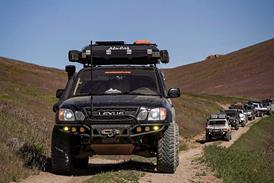





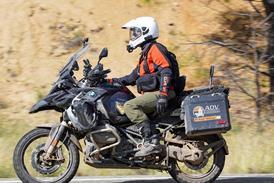












No comments yet